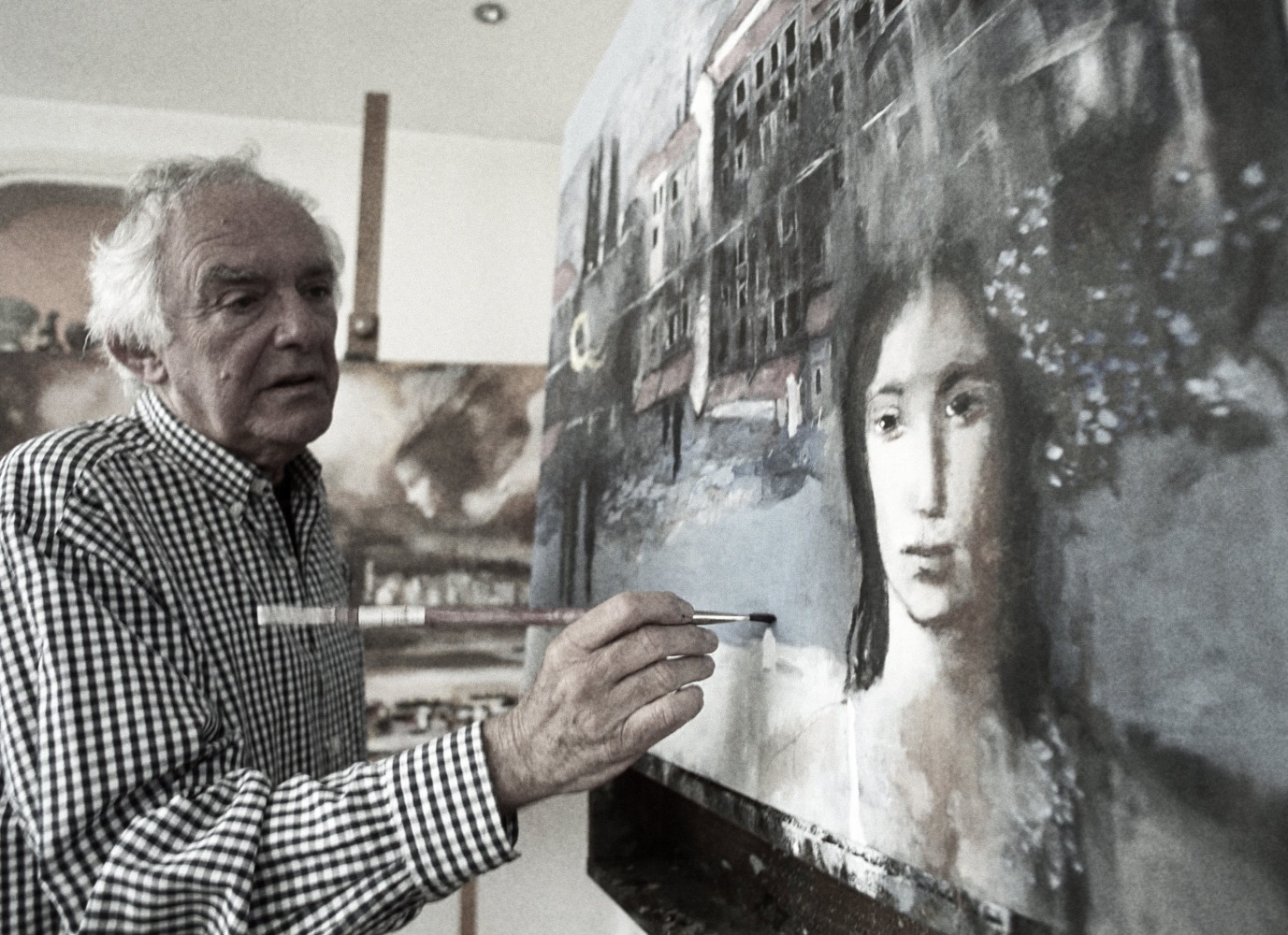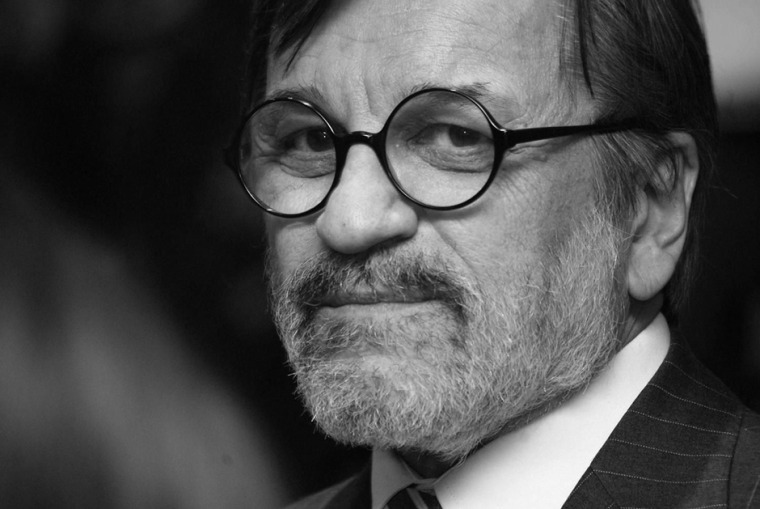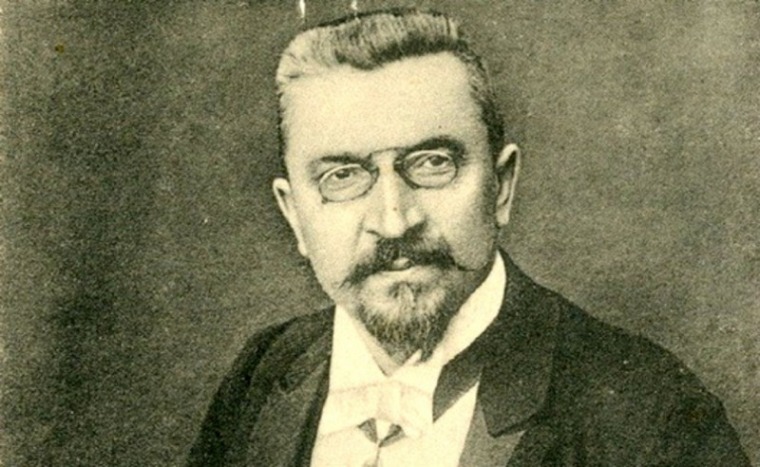Momo Kapor was a painter and writer who most truthfully, most vividly and most charmingly described Belgrade.
The trace that his life imprinted on the face of Belgrade can be experienced through a sightseeing new tour. This particular circular motion which gravitates towards the centre describing the life of this artist and writer contains the most interesting places in the city – it is worth the effort to spend time in this area first, to first experience the feeling and then describe it.
The beginning and end of this specific cultural, spiritual, artistic and hedonistic experience of Belgrade, symbolically, like the life of Momo Kapor, touches one point of the city – Vračar. Moma was nine years old when he came from Sarajevo to live in Belgrade at 27 Hadži Melentijeva Street, while he spent the last fifteen years of his life in Nebojšina Street, in the vicinity of Karađorđev Park and the Temple of Saint Sava.
“Belgrade is in the idea that impregnates the world wherever its spirit is conveyed. It is in a joke, in a random gesture, in the inherent casualness with which it receives victories and defeats, there, where a unit for the measurement of style is charm”
 Momo’s description of the Bohemian Quarter of Skadarlija Street, the Writers’ Club, Knez Mihailova Street, the Academy of Fine Art, Kalenić Market, city inns, the famous “Bermuda triangle” etc., these are the backbone of the mentioned tour, as well as the text that follows.
Momo’s description of the Bohemian Quarter of Skadarlija Street, the Writers’ Club, Knez Mihailova Street, the Academy of Fine Art, Kalenić Market, city inns, the famous “Bermuda triangle” etc., these are the backbone of the mentioned tour, as well as the text that follows.
KNEZ MIHAILOVA STREET
I have always loved Knez Mihailova Street. Even as a student of the Fine Art Academy I spent hours and days at “Kolarac” and in the evening, when Knez Mihailova becomes a “strip” for lovers and those who only intend to be lovers, I was a mandatory participant in those endless strolls, from the beginning to the end of the street. However, I must admit that I love this current Knez Mihailova Street the most. I’m proud that Belgrade has one such avenue that Paris or London or Rome or New York doesn’t have…
I stand at zero kilometre, on Madrid’s “Puerta del Sol” square and, of course, I’m thinking of Belgrade (and, what else would I be thinking of?), wondering where that imaginary point would lie if it was somehow embedded in the asphalt of Belgrade? For me, this is that piece of pavement at the beginning of Knez Mihailova Street in front of the Ruski Tsar inn, where I stopped for many years of my life, holding my back against a tree so as not to fall on strollers.
That mark in Belgrade would be a very useful thing. Scattered throughout the world, according to it we could measure how far we have strayed from our essence. Man, in fact, must have at least one important point in his life in order not to stray and get lost among other people, other nations … The mark near the Ruski Tsar Inn is that blessed measure for us.
After wandering all over the world, it seems to me that I finally figured out something important. The point is more than simple: who lives closer to that imaginary point – is happier than other Belgraders, no matter where they live, no matter how successful and rich they are.
KRALJA PETRA STREET
Whenever someone accuses Belgrade of alleged hostility towards other nations, religions and languages, I would like to grab them by the hand and take them to what at first glance seems to be a quite ordinary street, where they will learn a lot about tolerance.
That’s the street named 7th July, which was known as Kralja Petra I Street until the end of World War II and is once again called that today.
Kralja Petra Street, in a certain way, brings together the two rivers: from its beginning there is a view over the domestic River Sava – and at the other end one feels a breath of the international European Danube. Two rivers and one street misleading draped over the ridge of the city, like a tense arc between two civilisations…
Firstly it has our Cathedral Church, which was built by Prince Miloš in 1845 and developed by the Pančevo masters in the Baroque style, for 31,000 silver florins. The Patriarchy of the Serbian Orthodox Church and the Theological Faculty encircle the portrait of this Serbian Zagorsk – the centre of Orthodoxy in our country.
Heading further down, you will come across the old Bajrakli-mosque, whose walls rest up against Kralja Petra Street. This Islamic place of worship, with its harmonious arches, gives the opportunity for all Belgraders of the Mohammedan faith to perform their prayers.
Some hundred paces further is the Jewish community, with cultural-artistic clubs and halls for lectures and gatherings – where we can see the carefree nurturing of the long Judaism tradition of Dorćol Jews, who gifted Belgrade a particularly valuable, precious and voluptuous sound in poetry and painting.
Opposite is the hotel “Royal”, until recently “Toplice”, which has mostly been inhabited by our brother Russians and travellers from Eastern European countries. The luxurious “Benetton” boutique is located in the immediate neighbourhood of the oriental pastry shop, which is run by a hardworking Gorani, while the “Košava” Italian pizzeria is five steps below the exclusive pre-war Aero – Club and galleries displaying paintings of Petar Dobrović.
Is there a weirder and more tolerant street in the world?!
In the end it flows into Dorćol (in Turkish Dort-Jol, meaning an intersection of four roads or four lanes) the extinct Jewish quarter, where Serbs, Macedonians, Aromanians, Greeks, Armenians, Bulgarian gardeners and Romanians lived in friendship – a proper little Belgrade Babylon.
As a result of all of that, for me the modest Kralja Petra Street is a lesson in tolerance and friendship, which is often impossible to overcome in many richer main streets of enlightened Europe.
MAKEDONSKA STREET
The inns Grmeč – Zora – Šumatovac – the Bermuda triangle, where most commonly Belgrade journalists, artists and writers disappeared “for some time”.
Best illustrating how much Serbs like this type of inn is the story of one Belgrader, who spent years meeting at the same table in the old inn “Zora” with his friend and every time praised the veal heart and kidney goulash which his wife cooked as the world’s best goulash. Finally, they agree to bring this unsurpassed dish to the inn one Saturday; they taste it, but something, as a general impression, is lacking in the flavour of the goulash. Nobody could say what it was, until someone remembered and yelled “Pull it through the hatch” and only when the pot of stew had been sent through the opening from the kitchen where waiters collect orders did it really get that right flavour – the inn taste.
WRITERS’ CLUB
In the West writers live in solitude, each in his own world. Generally they don’t even know each other personally. Unlike them, beside the bar of the Writers’ Club in Belgrade it is possible to see the highest concentration of writers on a square metre in Europe. In the middle room, next to the bar, enter skinny starving and confused young poets from the province for the first time, but after two or three decades of the best lit left hall for dining they depart as tired, aggravated laureates – writers from children’s notebooks.
Beauties and future movie stars began their careers right here in the company of drunken poets and filmmakers. How much time would be required just to describe the meeting of worlds and generations, which only here, in this Belgrade underground passages and nowhere else, could come face-to-face, how much time to figure out the secret that compelled diplomats and politicians to leave their comfortable, closed clubs to be exposed to smoke, noise and drunken reciting poets whose eyes turned dark! I will never believe that they did that only because “the food here is really good!”
However, the famous Michelin gastronomic guide was never as mistaken as it was in the case of the Belgrade Writers’ Club, which for many is absolutely the best restaurant in the world and which, by some injustice, is not in this holy book intended for worldly gourmets.
When my friends from the outside world mention the Belgrade Writer’s Club I always notice that their voice shimmers in gastronomic sadness riddled by a night longing for a place where you can chat and argue until the morning. Indeed, the food at this club is extremely good, probably the best in the country.
This is actually the only menu I know by heart like a love song, not meant for the heart but for the stomach, from the first cold appetizers to the signature of Mister Buda. At the same time, it is also the best guide to what is called Serbian cuisine. It is enough for a foreigner to spend one night in the basements of the Writers’ Club at 7 Francuska Street to complete a one-night short introductory course to Belgrade and the basic mentality of the Serbian people, through food, drink and conversation.
SKADARLIJA
If I were to lead you through Skadarlija, first thing in the morning I would drink coffee with you on the terrace of “Two white doves”, then, as an appetizer, I would eat warm corn bread with cold curd at the inn “Šešir moj”, where even at noon a great orchestra of dark-skinned tamburitza musicians from Bačka play, then for gourmet beef stew with sour cream I would drop in to the “Zlatni bokal” restaurant. At “Tri šešira” I would take you for a real Serbian grill with sauerkraut sprinkled with red paprika, then for a slice of dry sweet pie across the street at “Dva Jelena”. On this street there is almost no restaurant that does not have its own band and they are all capable of playing folk dance music as well as they play Viennese waltzes.
I would not swear that after having gone through many restaurants, inns, pubs and cafes we will succeed in making it down to the last inn, “Skadarlija”, sober and to spend the night there and await the morning, but I am sure that you will leave Skadarlija in love, if not with the place itself, then certainly with your lovely companion, without whom all this would be worthless.
In Skadarlija dinner is not mandatory – love is!
KALENIĆ MARKET
For those who are not from Belgrade it should be noted that Kalenić market is the largest and richest in the city and that is located in Čubura. Older Belgraders still call it the Kalenić threshing floor.
Kalenić market is a kind of embassy of the villages in the capital. There each morning the green accreditation is again given to the pale citizens of Belgrade, who have long since lost their roots and connection with the earth and its fruits. No matter how much I have lived around the world, as someone born in the provinces I simply cannot get used to the illogical volume of supermarkets, where watermelons are sold in the middle of January! For us watermelon is always a sign of a mature summer that is on the wane; it simply doesn’t suit us in February. Living beside Kalenić market and on it, we’ve grown accustomed to the natural rhythm of ripening.
If you go to Kalenić market and forget the shopping list your wife wrote for you, don’t worry. Borrow the shopping list of any man you find there. They are all the same.
The tour has been designed and implemented by the Tourist Organisation of Belgrade and the Momčilo Momo Kapor Foundation.
By Dragana Marković
Photo: Momčilo Momo Kapor Foundation
Related Articles

The Father of Serbian Music: Remembering Stevan Mokranjac
September 22, 2025
10 Serbian Painters Who Marked the Art World
February 10, 2025
Danilo Kiš, a Genius of Serbian Contemporary Literature
February 22, 2016












